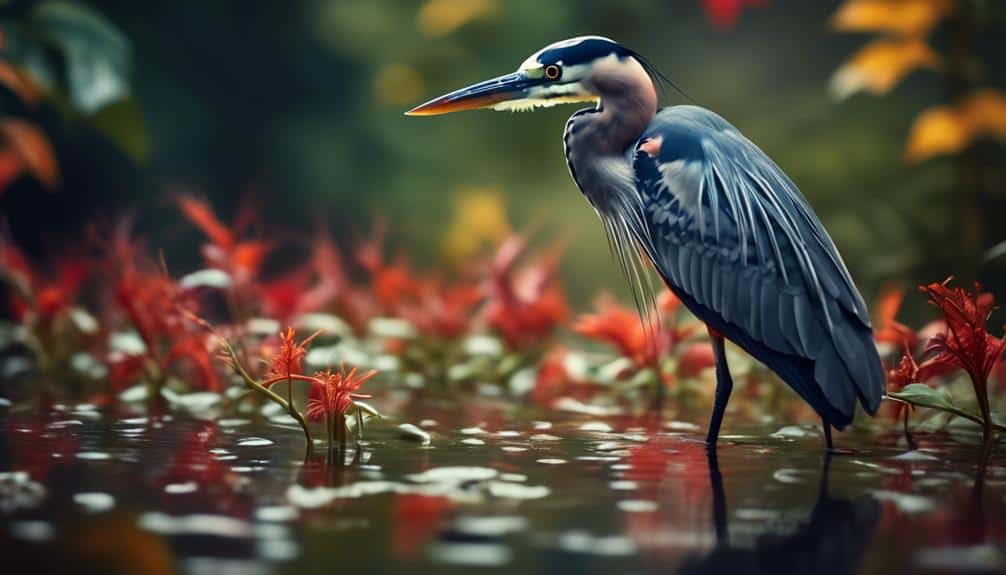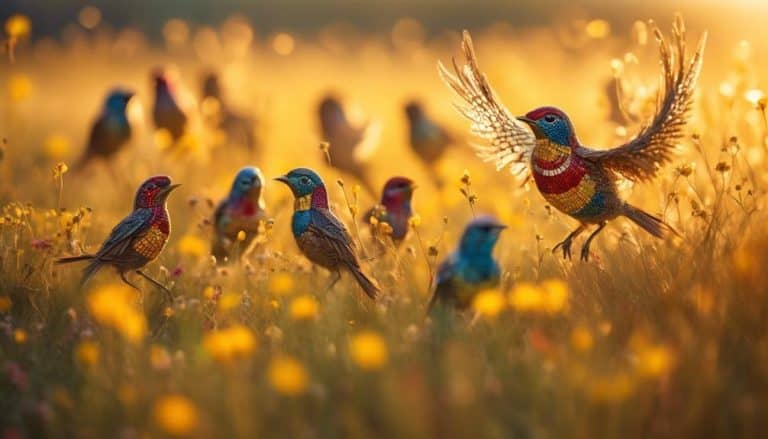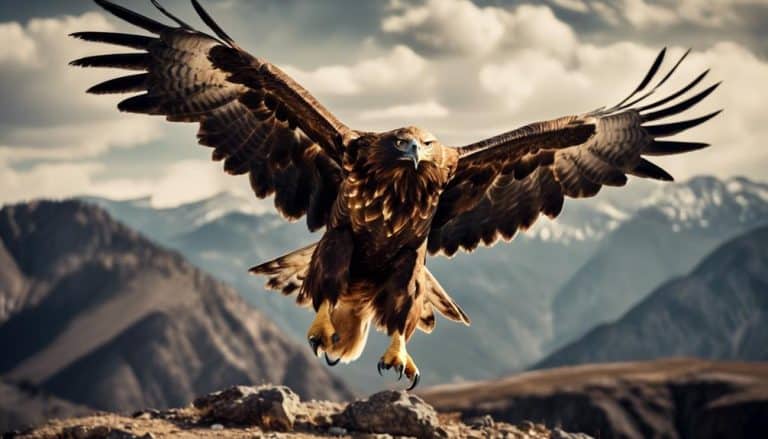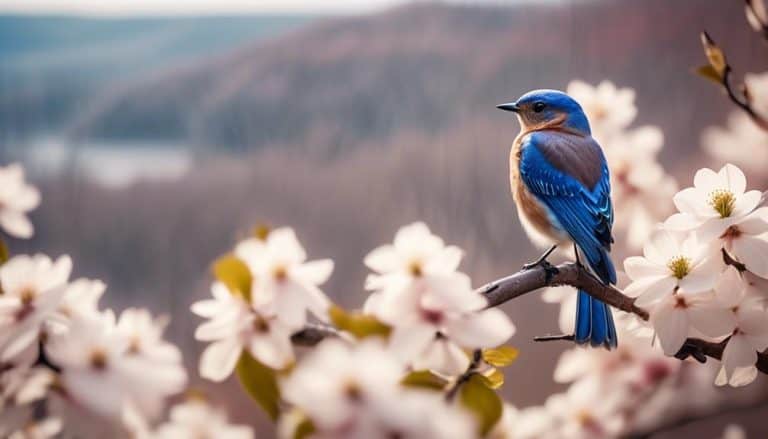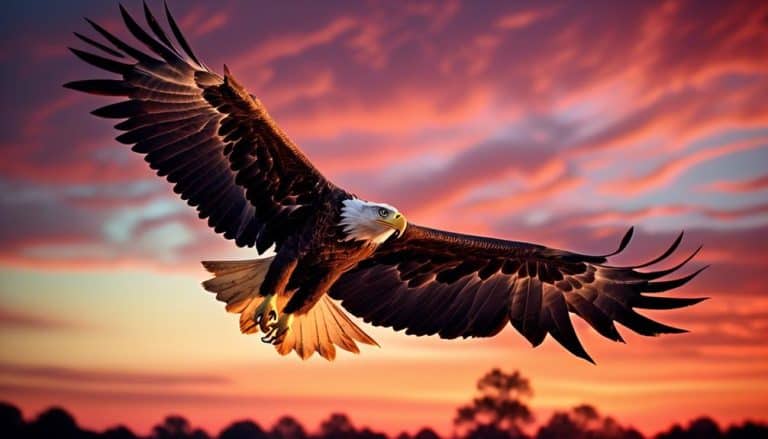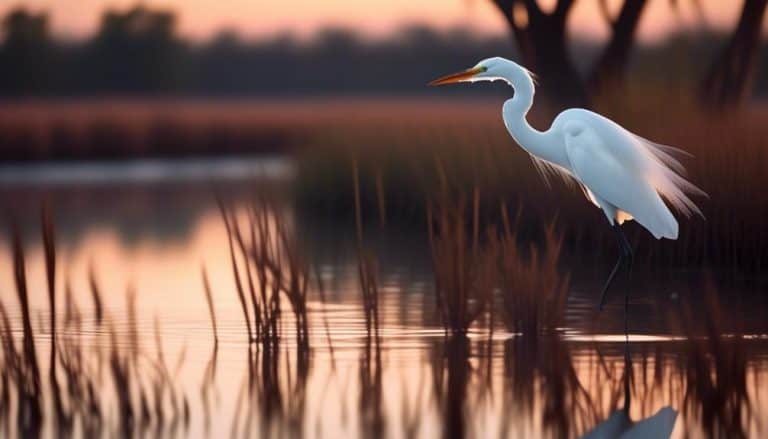As the sun rises over the enchanting landscapes of Delaware, a symphony of wings takes flight, painting the sky with vibrant colors and graceful movements. Like a kaleidoscope of nature's finest artwork, the birds of Delaware captivate both the heart and mind.
But beyond their beauty lies a mystery waiting to be unraveled. Join me on a journey to discover the diverse avian wonders that call Delaware home, from the majestic raptors soaring high above to the elusive forest dwellers hidden within the lush greenery.
Together, we will unravel the secrets of Delaware's birds, unveiling a world of wonder and fascination.
Common Birds in Delaware
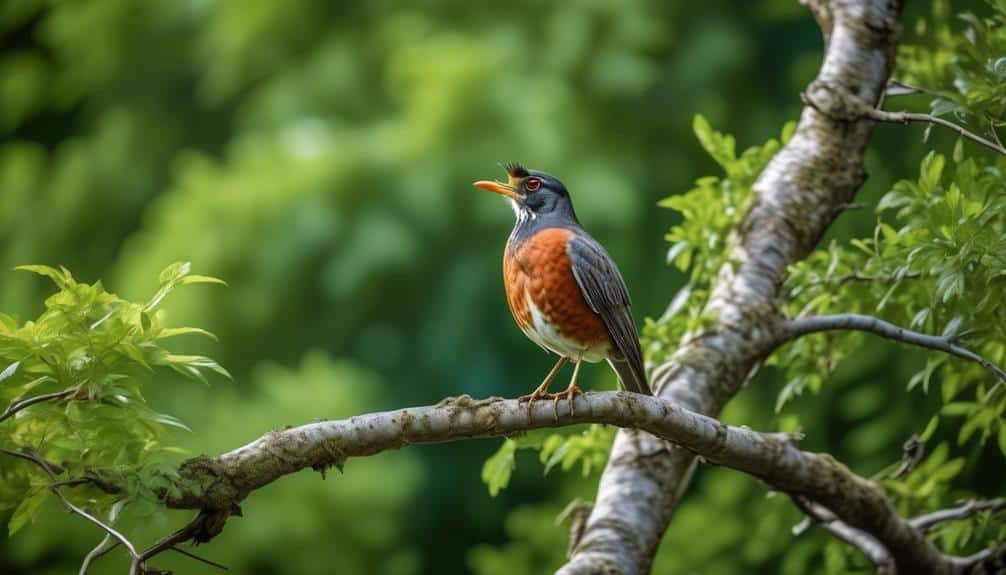
In my observation of the avifauna in Delaware, I've identified several common bird species that can be found throughout the state. These species provide excellent opportunities for bird watching and bird photography enthusiasts.
One of the most prevalent species is the Northern Cardinal (Cardinalis cardinalis), easily recognizable by its vibrant red plumage and distinctive crest. They can be found in a variety of habitats, including woodlands, gardens, and urban areas.
Another common bird species in Delaware is the American Robin (Turdus migratorius). These birds are known for their melodious songs and orange-red breasts. They can be found in open fields, parks, and suburban areas, where they feed on earthworms and berries.
The Great Blue Heron (Ardea herodias) is another frequent visitor to Delaware. These majestic birds can be spotted near bodies of water, such as ponds, wetlands, and rivers, patiently waiting for their prey.
For bird watchers and photographers looking for prime locations, Bombay Hook National Wildlife Refuge and Prime Hook National Wildlife Refuge are ideal spots. These protected areas provide a haven for migratory birds and offer stunning opportunities for capturing unique bird photographs.
To capture the best bird photographs, it's important to be patient and observe the birds' behavior. Study their movements and habits, and be mindful of their natural habitats. Using a telephoto lens and a tripod can help stabilize the camera and achieve sharp, detailed images. Additionally, understanding the lighting conditions and using appropriate camera settings will greatly enhance the quality of bird photographs.
Coastal Bird Species
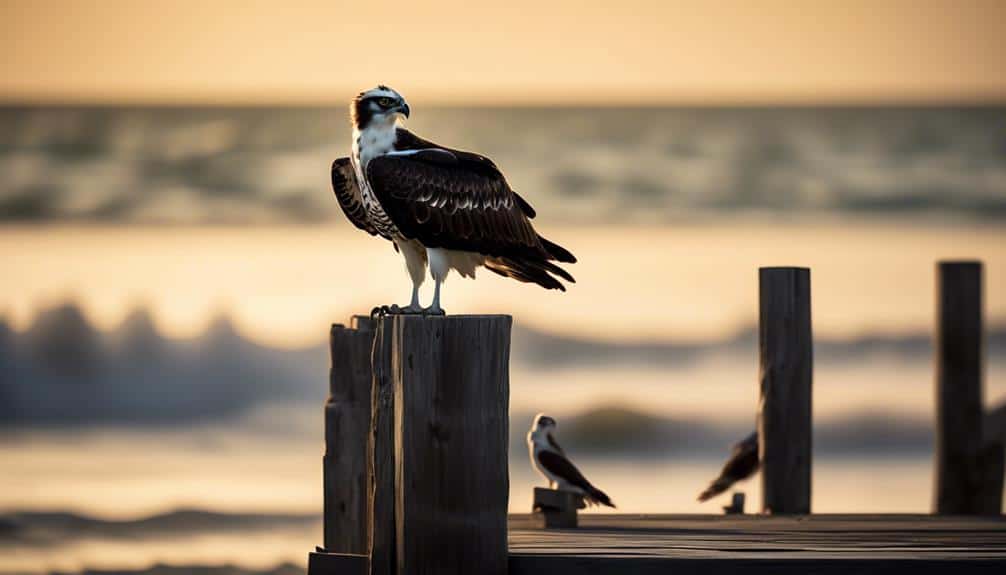
As I shift my focus to the coastal areas of Delaware, a new array of bird species comes into view, showcasing the diverse avian population that thrives in these unique habitats. The coastal regions of the state provide an ideal environment for many wetland bird species in Delaware. These species have adapted to the salt marshes, estuaries, and mudflats that characterize the Delaware coast.
One of the most notable wetland bird species in Delaware is the Red Knot (Calidris canutus). These birds undertake an incredible migration from their breeding grounds in the Arctic to their wintering grounds in South America, stopping along the Delaware Bay to feed on horseshoe crab eggs. Their presence in Delaware highlights the importance of the state's coastal habitats for migratory birds.
Delaware also has significant shorebird conservation efforts in place. The Delaware Shorebird Project, for example, aims to protect and conserve the breeding populations of shorebirds in the state. This project involves monitoring nesting sites, conducting research, and implementing conservation measures to ensure the survival of these vulnerable species.
Forest Dwelling Birds
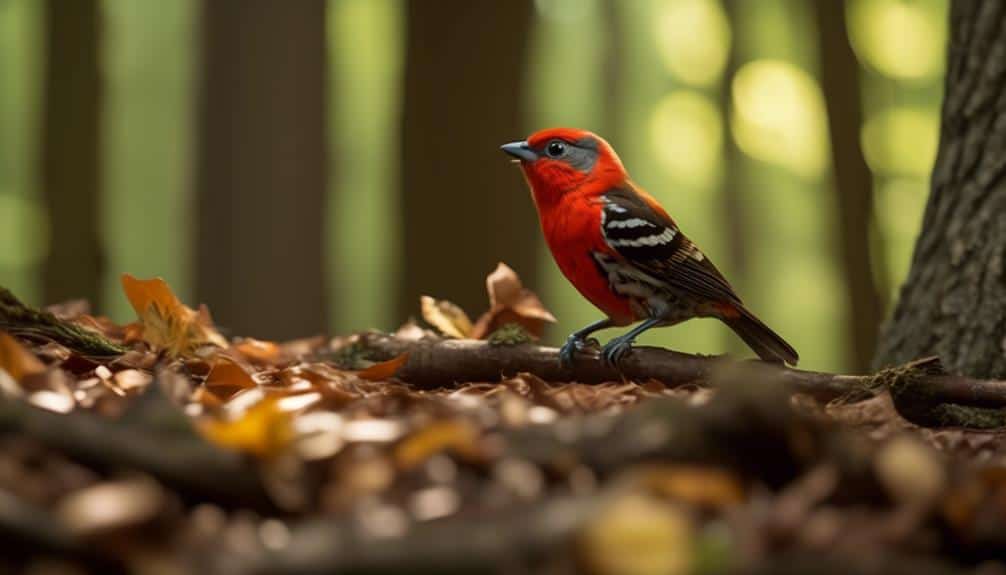
Forest dwelling birds in Delaware exhibit a diverse range of species that have adapted to the unique habitats of the state's wooded areas. As an avid bird watcher and photographer, I've found some helpful tips and techniques to enhance my experience in observing and capturing these fascinating creatures.
When bird watching in Delaware's forests, it's important to be patient and observant. Many forest dwelling birds are small and can easily blend into their surroundings, so paying attention to movement and listening for their distinct calls is crucial. Look for areas with dense vegetation and a variety of tree species, as these provide optimal habitats for a wide array of forest birds.
To capture stunning photographs of forest dwelling birds, it's important to understand their behavior and habitat preferences. Position yourself strategically, using natural cover as a camouflage. Birds are more likely to approach when they feel safe and undisturbed. Use a telephoto lens to get close-up shots without disturbing the birds. Patience is key when capturing that perfect shot, so be prepared to wait for the right moment.
Migratory Birds in Delaware
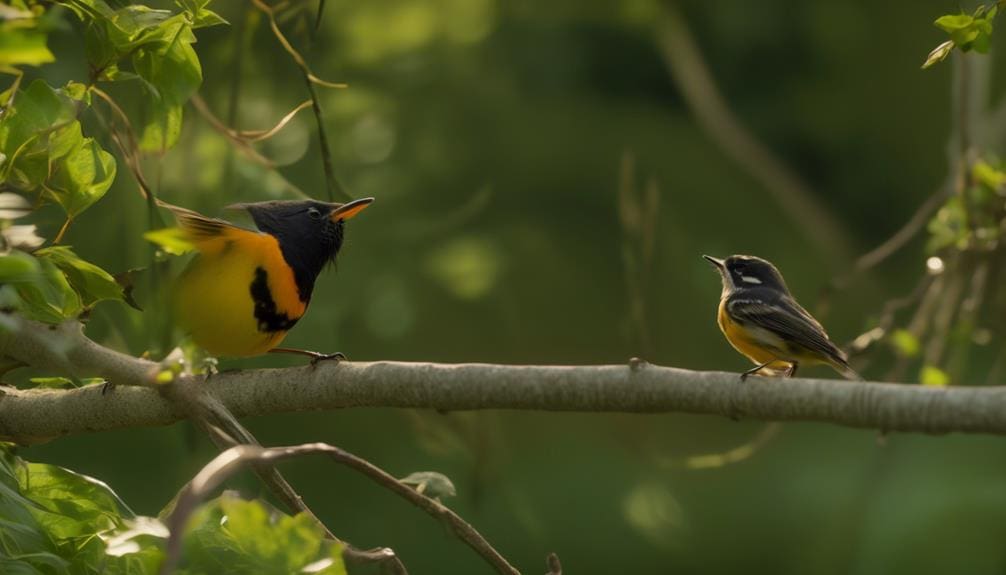
Migratory birds in Delaware bring a vibrant and ever-changing presence to the state's diverse avian population. Delaware, strategically located along the Atlantic Flyway, serves as a crucial stopover site for numerous species during their long and arduous migrations. The state's abundant wetlands, forests, and coastal areas provide essential habitats and resources for these birds during their journeys.
Birdwatching hotspots in Delaware, such as Bombay Hook National Wildlife Refuge and Prime Hook National Wildlife Refuge, offer fantastic opportunities to witness the spectacle of migratory birds. These protected areas provide critical stopover sites and breeding grounds for a wide array of species, including warblers, shorebirds, and waterfowl. The annual spring and fall migrations are particularly remarkable times to observe these feathered travelers.
Recognizing the importance of migratory birds, Delaware has implemented various conservation efforts to protect and support these species. The Delaware Bird-A-Thon, organized by the Delaware Nature Society, raises funds for bird conservation projects and promotes awareness about the significance of migratory birds. Additionally, the state collaborates with federal agencies and nonprofit organizations to conserve and restore habitats along the Delaware Bay, ensuring the availability of food resources for migratory birds during their critical stopovers.
Through these conservation initiatives and the preservation of birdwatching hotspots, Delaware strives to safeguard the diverse and awe-inspiring migratory birds that grace its landscapes. By understanding and appreciating the importance of these annual visitors, we can contribute to their long-term survival and the enjoyment they bring to our state.
Raptor Birds of Prey
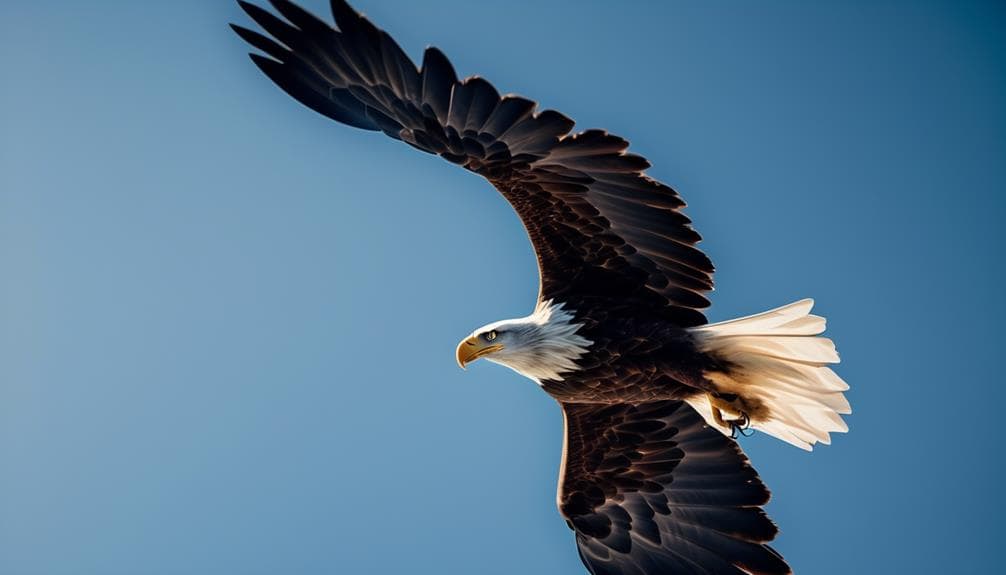
The raptor birds of prey found in Delaware showcase impressive predatory abilities and play a vital role in maintaining the ecological balance of the state's ecosystems. Among the raptors found in Delaware are various species of owls. The state is home to the Eastern Screech Owl, the Great Horned Owl, the Barred Owl, and the Barn Owl.
Owls are known for their exceptional hunting behavior. They possess sharp talons and powerful beaks that enable them to capture and kill their prey effectively. Owls have excellent hearing and vision, allowing them to locate their prey even in complete darkness. Their silent flight allows them to sneak up on unsuspecting prey without being detected.
These owl species in Delaware primarily hunt small mammals such as mice, voles, and rabbits. They're also known to feed on birds, reptiles, amphibians, and insects. Owls are skilled hunters, using their keen senses to locate their prey from a distance before swooping down to catch it. They often swallow their prey whole and later regurgitate pellets containing indigestible materials such as bones and fur.
The hunting behavior of raptors, including owls, is crucial for controlling populations of small mammals and maintaining the balance of the ecosystem. By preying on these species, raptors help regulate their numbers and prevent overpopulation, which can have detrimental effects on vegetation and other wildlife. Owls, with their silent flight and remarkable hunting abilities, are an essential part of the raptor community in Delaware.
Rare and Endangered Birds
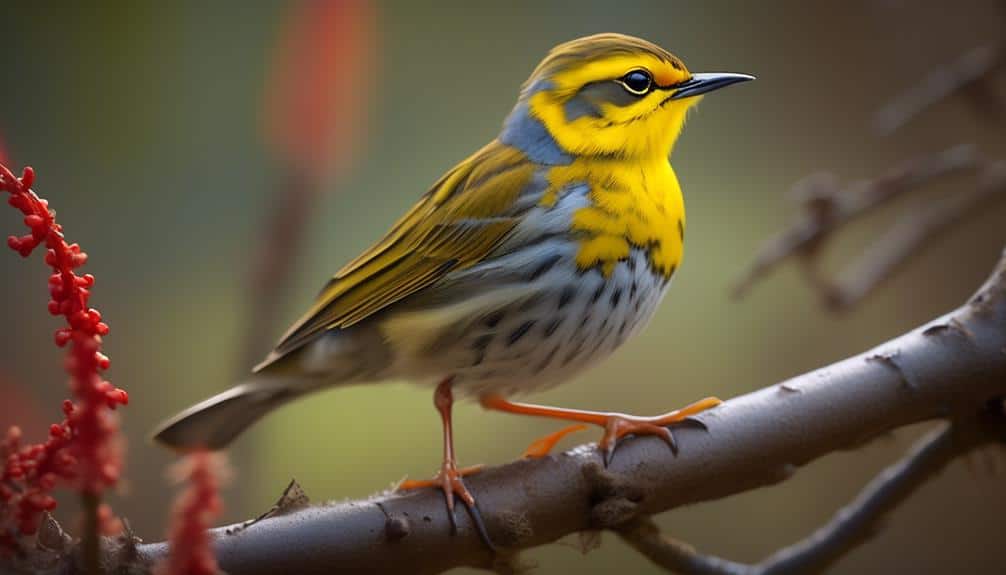
Rare and endangered birds are a crucial focus in Delaware's conservation efforts due to their vulnerable status and the importance of preserving their habitats. Delaware is home to several species of birds listed as endangered or threatened, making it a significant area for endangered bird conservation efforts.
One such bird is the piping plover (Charadrius melodus), a small shorebird that breeds along Delaware's coastline. Due to habitat loss and disturbance, the piping plover population has declined significantly, making their conservation a top priority.
Another rare bird species in Delaware is the red knot (Calidris canutus), a long-distance migrant that relies on Delaware's beaches and mudflats as a critical stopover site during its migration. The red knot is listed as a federally threatened species and faces many challenges, including habitat degradation and food shortages. Conservation efforts aim to protect and restore the beaches and wetlands these birds depend on.
Delaware's birdwatching hotspots, such as Bombay Hook National Wildlife Refuge and Prime Hook National Wildlife Refuge, provide opportunities for bird enthusiasts to observe rare and endangered species. By promoting responsible birdwatching and supporting habitat conservation initiatives, Delaware's conservation efforts play a vital role in preserving these species and their habitats for future generations.
Frequently Asked Questions
How Can I Attract Birds to My Backyard in Delaware?
I attract birds to my backyard by creating a bird-friendly environment through landscaping. I use native plants and provide feeders, birdbaths, and nesting boxes. It's important to provide food, water, and shelter for different bird species.
What Is the Best Time of Year to Go Birdwatching in Delaware?
The best time of year to go birdwatching in Delaware is during the spring and fall. These seasons are prime for bird migration, and some of the best spots to see a variety of species include Prime Hook National Wildlife Refuge and Bombay Hook National Wildlife Refuge.
Are There Any Birding Festivals or Events Held in Delaware?
Yes, there are birding festivals and events held in Delaware. These events provide opportunities to observe a variety of bird species and learn from experts. It is a great way to connect with other bird enthusiasts and expand your knowledge.
Are There Any Birdwatching Trails or Hotspots Recommended in Delaware?
There are several birdwatching trails and hotspots in Delaware that I would highly recommend. They offer a plethora of bird species to observe, making it a paradise for bird enthusiasts like me.
Are There Any Unique or Rare Bird Species That Can Be Spotted in Delaware?
There are several unique bird species that can be spotted in Delaware, making it a great destination for birdwatching. Beginners can start by visiting popular hotspots like Bombay Hook National Wildlife Refuge or Prime Hook National Wildlife Refuge.
Conclusion
After exploring the diverse avian life in Delaware, it becomes clear that this small state is a haven for birds of all kinds. From the majestic raptors soaring through the skies to the colorful migrants passing through, Delaware offers a rich tapestry of bird species to be discovered.
Whether you're a seasoned birdwatcher or a curious nature enthusiast, this state provides endless opportunities to witness the wonders of the bird world. So spread your wings and embark on a journey to uncover the hidden beauty of Delaware's feathered inhabitants.

